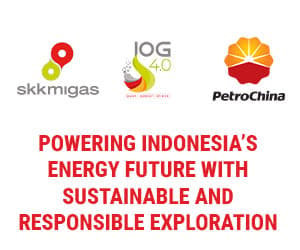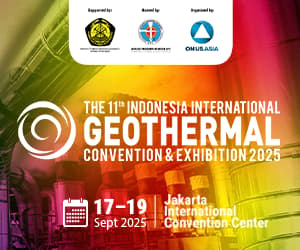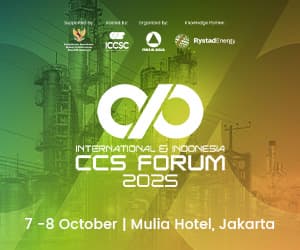(Fitch Ratings - Hong Kong/Singapore - 27 Aug 2025)--Fitch Ratings has affirmed PT Sorik Marapi Geothermal Power's (SMGP) USD350 million 7.75% senior secured notes due 2031 at 'BB+'. The Outlook is Stable.
RATING RATIONALE
The rating reflects the credit profile of SMGP, which is 95% owned by OTP Geothermal and ultimately controlled by Kaishan Group Co., Ltd.
SMGP benefits from long-term fixed-price power purchase agreements (PPAs) with escalation clauses. These secure the sale of electricity from its geothermal power plant, which uses proven innovative geothermal generation technology, to Indonesian state-owned utility PT Perusahaan Listrik Negara (Persero) (BBB/Stable). The PPA's take-or-pay (TOP) structure, which covers 90% of the latest unit rated capacity (URC), is tested annually or as required. These features insulate the project from merchant revenue risk.
We assess SMGP's financial profile using the debt service coverage ratio (DSCR) over the life of the notes and the refinancing period, which ends in 2041. We assume that outstanding principal will be refinanced at maturity with fully amortising debt, aligned to a 20-year capacity-weighted economic life from each unit's commercial operation date. Our rating case forecasts the average DSCR at 3.1x over the remaining note tenor and 3.0x during the refinancing period.
The DSCR is commensurate with a stronger financial profile than implied by the note rating, as the rating is constrained by the plant's limited operating record, uncertainty around the timing, scope and success of SMGP's drilling programme, as well as the impact on revenue from a potential production decline and the cost-plus nature of SMGP's operations and maintenance (O&M) contracts. The note's partially amortising structure introduces refinancing risk, but this is mitigated by the presence of mandatory cash sweeps (MCS).
KEY RATING DRIVERS
Operation Risk - Weaker
Innovative Technology, Cost-Plus O&M
SMGP's geothermal generation technology differs from the conventional centralised power plant designs used at other Indonesian geothermal sites. This technology has demonstrated commercial viability since 2014 at a comparable project in Alaska, US. The plant is operated by an experienced in-house team, supported by technical consultancy services provided by shareholders that include personnel training and the supply of spare parts for the Organic Rankine Cycle and steam expanders. However, the cost-plus nature of the O&M arrangement exposes the plant to potential cost overruns and the risk of operational underperformance.
A possible decline in geothermal reservoir productivity necessitates ongoing capital expenditure, introducing uncertainty to plant operations. This risk is mitigated by a major maintenance reserve account, which will be credited annually with 25% of total make-up well capex for 2027-2029 over 2025-2028 and 33% of total make-up well capex for 2032 over 2029-2031. The plant is also subject to geological risk, including earthquakes and landslides, which are common in Indonesia. These factors further constrain our assessment of operational risk to 'Weaker'.
Revenue Risk - Volume - Midrange
Inherent Volatility in Resource Supply, Limited Curtailment Risk
The geological complexity of geothermal reservoirs results in only estimated geographic output, leading to long-term supply risk. Simulations conducted by an independent technical advisor indicate that, with appropriate reservoir maintenance, the project can maintain power output at 173 megawatts electric (MWe) until 2035 and 135MWe until 2051. However, over-extraction, drought, earthquakes or inadequate maintenance could accelerate decline rates and shorten the economic life of the resource.
The actual decline observed after the commissioning of Unit 5 remains within 2.5% a year, although the operating record is limited. The historical decline rate was 6%-7% a year before the wellfield programme was implemented in 2024. SMGP forecasts a long-term decline rate of 2.5%, based on its capex plan, but this is subject to successful drilling in undrilled reservoir margins, resulting in ongoing uncertainty. The PPA allows for TOP obligation adjustments based on URC rather than installed capacity. The URC can be revised without penalty, but a lower URC reduces generation and revenue. The risk of generation curtailment is mitigated by the TOP structure.
Revenue Risk - Price - Stronger
Supportive Long-Term PPA, Indexed Price
All power generated is eligible for dispatch under a fixed-price PPA with an investment-grade offtaker, insulating the project from merchant price volatility. Twenty-five percent of the power tariff is indexed to the US Producer Price Index, enabling adjustment in line with inflation. The indexed portion closely tracks operating costs, providing protection against inflation risk. In addition, the tariff is denominated in US dollars, mitigating foreign-currency risk.
Debt Structure - Midrange
Partially Amortising Debt, Manageable Refinance Risk
The security package comprises the issuer's capital stock, security interests over project accounts, assignment of shareholder loans and fiduciary security over SMGP's insurance proceeds, movable assets and 110 plots of land. However, regulatory restrictions prevent the inclusion of project contracts, such as the PPA, in the security package.
Noteholders benefit from a lock-up test based on a backward-looking graded DSCR. Additional debt is permitted only if the projected DSCR exceeds 1.6x, with a loan basket cap of USD15 million. The notes also feature partial amortisation of 6% over the tenor, while a 54.3% MCS mitigates refinancing risk.
Financial Profile
We assess SMGP's financial profile using the DSCR during the note tenor and refinancing period. Our DSCR forecast assumes that outstanding note principal will be refinanced at maturity with long-term amortising debt over the remaining project economic life, which extends to 2041.
Our base case incorporates a steady decline rate of 3.0% from 2H25, compared with SMGP's estimate of 2.5%; an O&M contract with Kaishan at 5.0% of revenue, rather than the current contracted rate of 3.5%; and a 1.5% stress on the refinancing interest rate before withholding tax, as assumed by the issuer. The interest income rate is set at 4.5% per annum, against 5.0% in the management case. This results in an average DSCR of 3.5x over the remaining note tenor and 3.6x after the refinancing period.
Our rating case assumes a higher steady decline rate of 4.5% from 2H25 and a 15% increase in operating and capital expenditure. We further stress the interest income rate to 3.5% per annum. This results in an average DSCR of 3.1x over the remaining note tenor and 3.0x after the refinancing period.
PEER GROUP
We regard Star Energy Geothermal (Salak-Darajat) Restricted Group (SEGSD RG, senior secured rating: BBB-/Stable) as a comparable peer. Both entities operate geothermal power plants in Indonesia under long-term PPAs with a TOP structure. However, the higher rating on SEGSD RG's notes reflects the group's longer operating record, larger economic scale, greater predictability of energy production underpinned by a robust capital expenditure plan and the absence of refinancing risk due to a fully amortising debt structure.
SMGP's DSCR of 3.00x during the refinancing period under our rating case is significantly stronger than SEGSD RG's 1.67x. However, SMGP's credit profile is constrained by long-term production uncertainty and refinancing risk associated with its partially amortising structure with a MCS. SEGSD RG also benefits from economies of scale and diversification across nine generation units at two sites, with a total capacity of 648MW. By comparison, we expect SMGP to maintain operations of five units at a single site, with total net installed generation capacity of around 190MW.
RATING SENSITIVITIES
Factors that Could, Individually or Collectively, Lead to Negative Rating Action/Downgrade
The average annual DSCR in our rating case dropping below 1.45x for a sustained period.
An adverse environmental, social or governance issue would trigger a negative event review or action.
Factors that Could, Individually or Collectively, Lead to Positive Rating Action/Upgrade
We do not expect an upgrade in the near term, due to the limited record of stable operation and the sustainable capacity decline rate.
REFERENCES FOR SUBSTANTIALLY MATERIAL SOURCE CITED AS KEY DRIVER OF RATING
The principal sources of information used in the analysis are described in the Applicable Criteria.
ESG Considerations
PT Sorik Marapi Geothermal Power has an ESG Relevance Score of '4' for Management Strategy and Human Rights, Community Relations, Access & Affordability due to gas leakage issues in 2021 that sparked opposition among the local community. The company has implemented countermeasures, including enhanced occupational health and safety policies, installation of a hydrogen sulfide abatement system, gas control training, community compensation, improved evacuation procedures and better risk management, but the issue still has a negative impact on the credit profile and is relevant to the note rating in conjunction with other factors.
The highest level of ESG credit relevance is a score of '3', unless otherwise disclosed in this section. A score of '3' means ESG issues are credit-neutral or have only a minimal credit impact on the entity, either due to their nature or the way in which they are being managed by the entity. Fitch's ESG Relevance Scores are not inputs in the rating process; they are an observation on the relevance and materiality of ESG factors in the rating decision. For more information on Fitch's ESG Relevance Scores, visit https://www.fitchratings.com/topics/esg/products#esg-relevance-scores. (ends)












